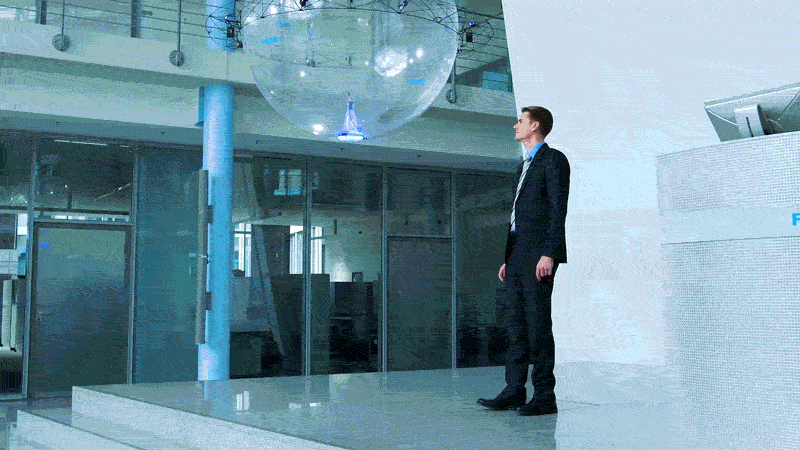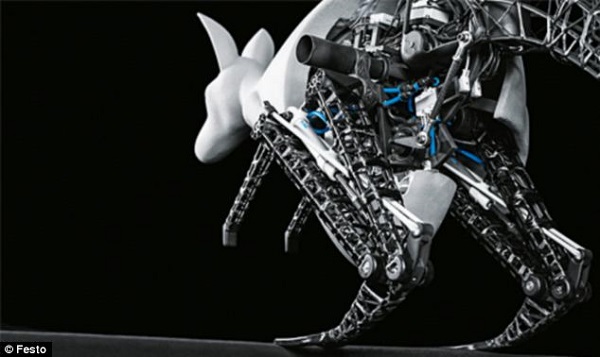When creating robots that resemble living beings, engineers go either for a humanoid design or for insects, so this bionic kangaroo might as well be the first of its kind. Its self-recharging legs could in theory help this robo-roo hop forever and ever, till the end of time.
The German group Festo, which is behind this bionic kangaroo, proved that robots don’t have to be evil, since conspiracy theorists are certain of the fact that our metallic companions will break bad someday, in the not-so-distant future. That’s what the group tries to prove, despite admitting that they’ve been working on secret on this project. In this context, maybe it wouldn’t be wrong to assume that the BionicKangaroo (that’s really how this robot is called, so Festo must have lacked imagination in the naming department) could at some point fight for world domination.
Festo’s Dr Heinrich Frontzek pointed out that “With the BionicKangaroo we have precisely reproduced the most characteristic features of natural kangaroos: recuperating and storing energy, and then releasing it once more in the next bound.”
More precisely, the secret of this potential perpetuum mobile is the elastic spring that charges the legs while landing from a jump, fact that helps the BionicKangaroo make the next jump. What prevents this from being a real perpetuum mobile is the fact that a small part of the energy is lost after each jump, making the following ever so inferior.
The group’s Bionic Learning Network equipped the BionicKangaroo with a small storage tank containing high-pressure air needed by the pneumatic muscles for powering the movement. Judging by the motion patterns of this robot, one could say that the engineers who developed it have studied real-life kangaroos for quite some time. After all, this is what it takes when creating a bio-inspired robot.
BionicKangaroo weighs only 15 lb (7kg) and measures just 3ft 3inches (1m), but this doesn’t stop it from hopping 1ft 3inches (40cm) vertically and 2ft 7 inch (0.8 meters) horizontally. The robot recreates the jumps of real kangaroos with great accuracy, its pneumatic pumps acting exactly like organic tendons and muscles.
This definitely represents a great step in the evolution of bio-inspired robots, and it will be worth waiting to see what Festo have in store for us in the future. We only hope that they don’t make such a big secret of their future projects.
Be social! Follow Walyou on Facebook and Twitter, and read more related stories about the RoboRoach smartphone app that lets you control cockroaches, and the hexapod hexacopter robot.




 Today on In Case You Missed It: Ford is testing self-driving cars on a completely dark night course, designed to be used without headlights. An automation company built a flying sphere that can pick up and deliver things with a very sphincter-like...
Today on In Case You Missed It: Ford is testing self-driving cars on a completely dark night course, designed to be used without headlights. An automation company built a flying sphere that can pick up and deliver things with a very sphincter-like...
 Festo is known for drones modeled on animals, like the Seagull-inspired SmartBird and 3D-printed BionicANTs. We're not sure what animal the "FreeMotionHandling" sphere is supposed to be -- some kind of flying jellyfish, maybe? Regardless, it's one of...
Festo is known for drones modeled on animals, like the Seagull-inspired SmartBird and 3D-printed BionicANTs. We're not sure what animal the "FreeMotionHandling" sphere is supposed to be -- some kind of flying jellyfish, maybe? Regardless, it's one of...






